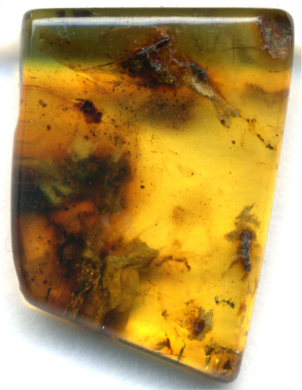Genesis 7:20-21
“Fifteen cubits upward did the waters prevail; and the mountains were covered. And all flesh died that moved upon the earth, both of fowl, and of cattle, and of beast, and of every creeping thing that creepeth upon the earth, and every man:”
 Some of the most fascinating fossils are those of insects and other creatures trapped in amber. The creatures are often well-preserved and look as if they have been trapped quickly. One recent science article reported on a find in Lebanon of insects trapped in the process of hatching out from their eggs. The insects, which appear to be like modern green lacewings, show every indication of being newly hatched, by a number of anatomical features. Dr. Michael S. Engel, one of the study’s authors, said, “The process of hatching is ephemeral, and the structures that make it possible tend to disappear quickly once egg-laying animals hatch, so obtaining fossil evidence of them is truly exceptional.” Also, their jaws had not fully interlocked – a process that happens very soon in newly hatched nymphs.
Some of the most fascinating fossils are those of insects and other creatures trapped in amber. The creatures are often well-preserved and look as if they have been trapped quickly. One recent science article reported on a find in Lebanon of insects trapped in the process of hatching out from their eggs. The insects, which appear to be like modern green lacewings, show every indication of being newly hatched, by a number of anatomical features. Dr. Michael S. Engel, one of the study’s authors, said, “The process of hatching is ephemeral, and the structures that make it possible tend to disappear quickly once egg-laying animals hatch, so obtaining fossil evidence of them is truly exceptional.” Also, their jaws had not fully interlocked – a process that happens very soon in newly hatched nymphs.
Although the evolutionary scientists reporting the find acknowledge the sudden death of the insects and their entrapment in the amber, they believe the whole fossil to be 130 million years old. Yet, amber, which is formed by the polymerization of the sticky wood resin which has trapped the insects, degrades quickly in the open. So the amber itself must have been buried rapidly in sediment, suggesting a catastrophic formation. Amber fossils, therefore, shed light on creatures of the pre-Flood world, not that of mythical deep time. It is interesting that evolutionist researchers do not carry out carbon dating on amber fossils, no doubt concerned that a carbon date would be consistent with a biblical age.
Prayer: Lord, we see the reminders of Your judgment at the time of the Flood all around us. Help us to spread Your Gospel, so that more may be saved from the final judgment to come. Amen.
Author: Paul F. Taylor
Ref: University of Oxford. “Newborn insects trapped in amber show first evidence of how to crack an egg: Amber preserving newborns, egg shells, and egg bursters shows that the hatching mechanism of green lacewings was established at least 130 million years ago.” ScienceDaily, 20 December 2018. <www.sciencedaily.com/releases/2018/12/181220075955.htm>. Image: CC BY-SA 2.5 Generic.
© 2019 Creation Moments All rights reserved.
